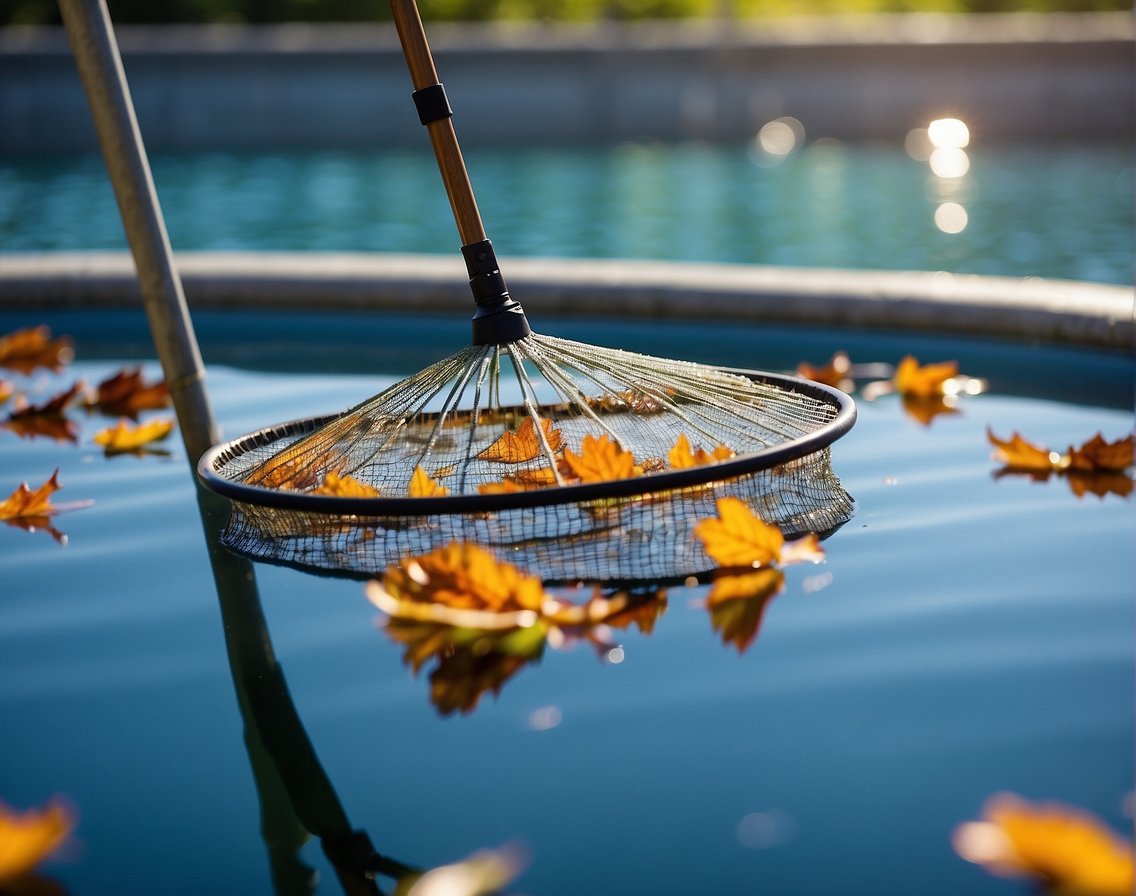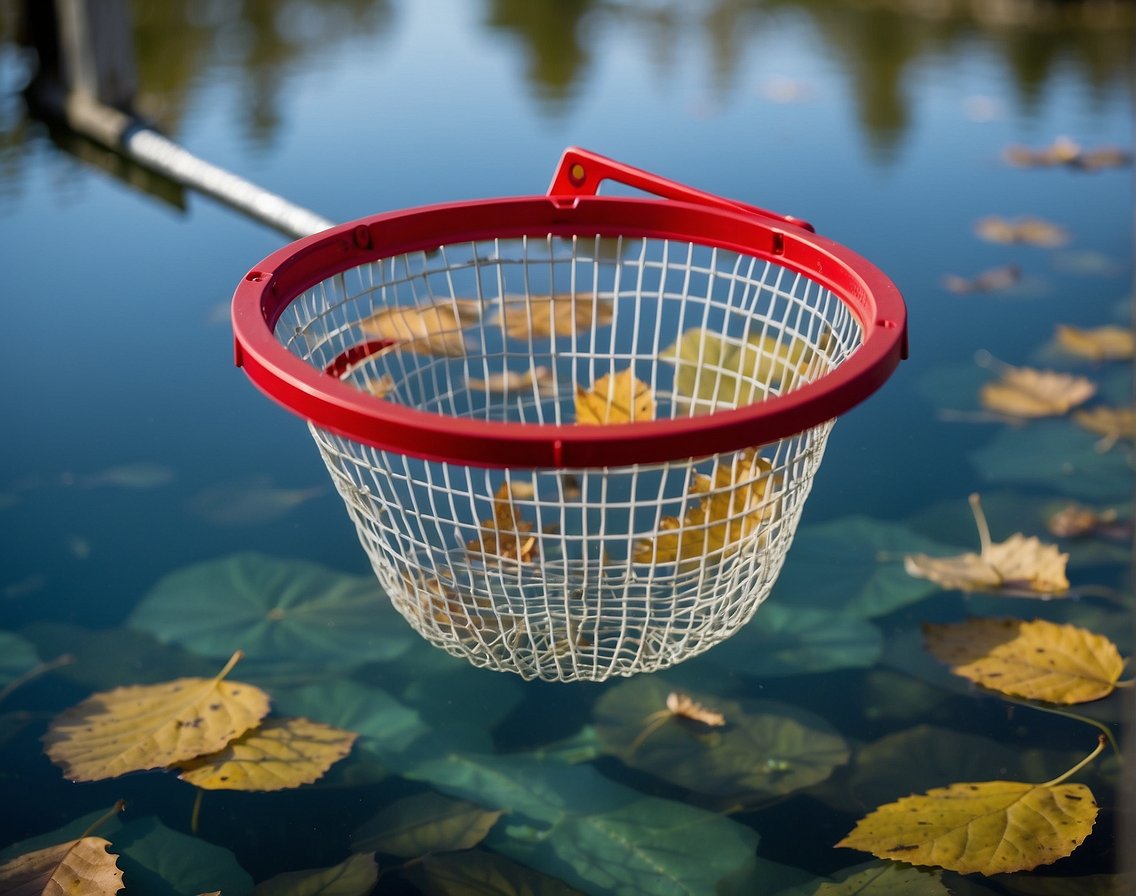Understanding Pool Skimming

Pool skimming is a critical maintenance task that ensures water quality and extends the life of your pool. We will explore why regular skimming is necessary, the different types of skimmers available, and how skimming differs from full pool cleaning.
Importance of Regular Skimming
Regular skimming keeps the pool water inviting and healthy. It’s a preventative measure to remove leaves, bugs, and other debris, which can clog filters and affect water balance. By staying on top of this task, we minimize the need for chemical treatments and protect the pool’s filtration system.
- Prevents algae growth: Removing organic material quickly prevents algae from forming.
- Saves money: Less debris means fewer blockages and lower repair costs.
- Improves circulation: Clearing the surface allows for better water circulation and filtration.
Types of Pool Skimmers
There are a variety of skimmers designed to suit different pool types and owner preferences. Knowing which skimmer works best for you can greatly enhance your pool maintenance efficiency.
Handheld Skimmers:
- Manual pool nets: These are inexpensive and suitable for daily use on light debris.
- Deep net skimmers: These have deeper nets for collecting larger amounts of debris at once.
Automatic Skimmers:
- Suction-side skimmers: These attach to your pool’s existing filtration system.
- Robotic skimmers: These are independent units that move around the pool surface.
| Skimmer Type | Ideal For | Maintenance Level |
|---|---|---|
| Manual pool nets | Light debris; Small pools | High |
| Deep net skimmers | Heavier debris; Any pool size | Moderate |
| Suction-side | Variety of debris; Larger pools | Low |
| Robotic | All debris types; Busy owners | Low |
Skimming vs. Full Pool Cleaning
While skimming is a daily task focused on the pool’s surface, full pool cleaning is a comprehensive process that involves vacuuming the pool floor, brushing walls, and inspecting the filtration system.
Skimming
- Targets: Surface debris
- Frequency: Daily
- Focus: Quick removal of floating debris
Full Pool Cleaning
- Targets: Entire pool area
- Frequency: Weekly to monthly
- Focus: In-depth cleaning and water quality maintenance
Understanding the distinction between skimming and full pool cleaning is essential for proper pool care. Regular skimming is a straightforward yet crucial part of maintaining a clean and functional swimming environment. By integrating daily skimming into your routine, you’ll ensure a pleasant and safe swimming experience.
Choosing the Right Skimmer for Your Pool

When it comes to maintaining a sparkling clean pool, having the right skimmer is essential. Pool size and pool type (inground or above-ground) are crucial factors in our choice.
For smaller or medium-sized pools, a manual skimmer is often sufficient. It’s less expensive and easy to use, but requires more effort on our part. For those of us with larger pools or who prefer hands-off maintenance, an automatic pool skimmer might be the best option. These come in various types:
- Suction skimmers connect to the pool’s filtration system and can be a cost-effective option.
- Solar skimmers are eco-friendly and use the sun’s power to move around the pool, removing debris.
In selecting a skimmer, durability is key, as it directly impacts the lifespan and maintenance costs. High-quality materials may cost more upfront but offer better performance and effectiveness over time. It’s advisable to read reviews and compare different brands to gauge which models have proven to be the best pool skimmers.
Here are some tips for making a smart choice:
- Match the skimmer to your pool’s size and type.
- Weigh the initial price against long-term maintenance costs.
- Look for models known for their durability and effectiveness.
Keeping these points in mind, we can ensure our pool remains a clean and inviting space with minimal hassle.
Effective Skimmer Use and Maintenance

Effective pool skimming requires both diligent use of skimmers and regular maintenance to ensure that pools remain clean and the water stays balanced. We will now explore how to maximize the efficiency of various skimming tools and the importance of their upkeep.
Manual Pool Skimmers:
We recommend skimming the pool surface every few days to remove floating debris. This is crucial to prevent it from sinking and causing stains or algae growth.
- Daily use: Utilize manual skimmers with long poles to reach debris.
- Regular cleaning: Empty skimmer baskets after use or when half full.
Automatic Pool Skimmers:
For continuous cleaning, leverage automatic skimmers as they navigate the surface.
- Consistent schedule: Program the skimmer to operate daily.
- Basket check: Inspect the skimmer basket weekly and clean as needed.
Pool Equipment Maintenance:
Regular check-ups of all pool equipment, including pool pumps, filters, and heaters, are vital. Ensuring they are in good working condition impacts the effectiveness of your skimming process.
- Backwashing or filter cleaning: Perform this monthly or as per the manufacturer’s instructions to remove debris from the pool filter.
- Water balance: Test and adjust the pH level frequently to maintain water health.
Robotic Pool Cleaners:
Robotic cleaners can supplement the skimming process by removing debris from the pool floor and walls. Set them to run routinely for optimized results.
- Periodic supervision: Oversee the operation to ensure complete coverage.
- Maintenance checks: Inspect and clean out the units as specified by their maintenance guides.
By adhering to these guidelines, we ensure our pools remain inviting, healthy, and free of unwanted debris.
Frequently Asked Questions
In providing guidance on pool skimming, we’ll address common inquiries with precise, experience-based information.
What is the most effective skimmer net for capturing fine particles in a pool?
The most effective skimmer net is typically one with ultra-fine mesh. These nets are designed to trap fine debris, such as dust and sand, that often pass through coarser nets.
How do you choose the best pool skimmer pole for your needs?
The best pool skimmer pole should be long enough to reach the entire surface of your pool, be sturdy, and made of materials resistant to corrosion, such as anodized aluminum or heavy-duty plastic.
What are the advantages of using an ultra-fine mesh pool skimmer net?
An ultra-fine mesh pool skimmer net provides superior filtering capabilities. Such a net can capture the smallest particles, helping to maintain clear water and reducing the demand on your filtration system.
What techniques improve the efficiency of skimming pollen from a pool?
For skimming pollen effectively, we recommend a consistent skimming routine, using a pool cover when the pool is not in use, and considering a pool skimmer with finer mesh specifically designed for pollen and similar-sized particles.
Which pool skimmer nets are suitable for small debris and fine particles?
Pool skimmer nets suitable for small debris and fine particles are ones with a close-knit mesh design. Look for labels or descriptions noting the net is intended for fine debris.
What is the best way to maintain and clean a pool skimmer to ensure optimal performance?
To maintain and clean a pool skimmer, routinely remove trapped debris, rinse the net with a hose, and periodically check for holes or damage. Storage in a shaded area can prevent the sun from degrading the material.
